CAM: China consolidates its position as EV market leader
One thing is clear: although the momentum varies greatly depending on the region and manufacturer, electric mobility continues to show strong growth worldwide, as the CAM states right at the beginning of the analysis for the third quarter. That is primarily due to developments in China, which continues to expand its global leadership role in electric mobility.
In the first three quarters of 2024, 4.1 million battery electric vehicles (BEV) were newly registered there, an increase of 18 per cent compared to the previous year. BEVs thus account for 27 per cent of all new registrations in China. In addition, 2.2 million plug-in hybrids (PHEVs) were newly registered in the same period. The share of EVs – China itself tends to refer to new energy vehicles (NEVs) when combining BEVs and PHEVs – rose to 41.5 per cent of new registrations from Jan-Sept 2024. According to the CAM, if we look at the third quarter alone, the NEV rate even rose to 52.7 per cent, meaning that new energy vehicles accounted for more than half of all new registrations.
After three quarters, the CAM attests to a “mixed picture” in Europe. Large markets such as France (217,000 BEVs) and the UK (270,000 BEVs) grew significantly by six and 13 per cent, respectively. In the UK, the market share of battery electric cars has risen to 18.1 per cent. That means the UK is on the verge of becoming the largest BEV market in Europe. In Germany, new electric registrations have fallen to 276,000 vehicles after three quarters, a decline of 29 per cent. In this country, only 13.1 per cent of new registrations between January and September were purely electric.
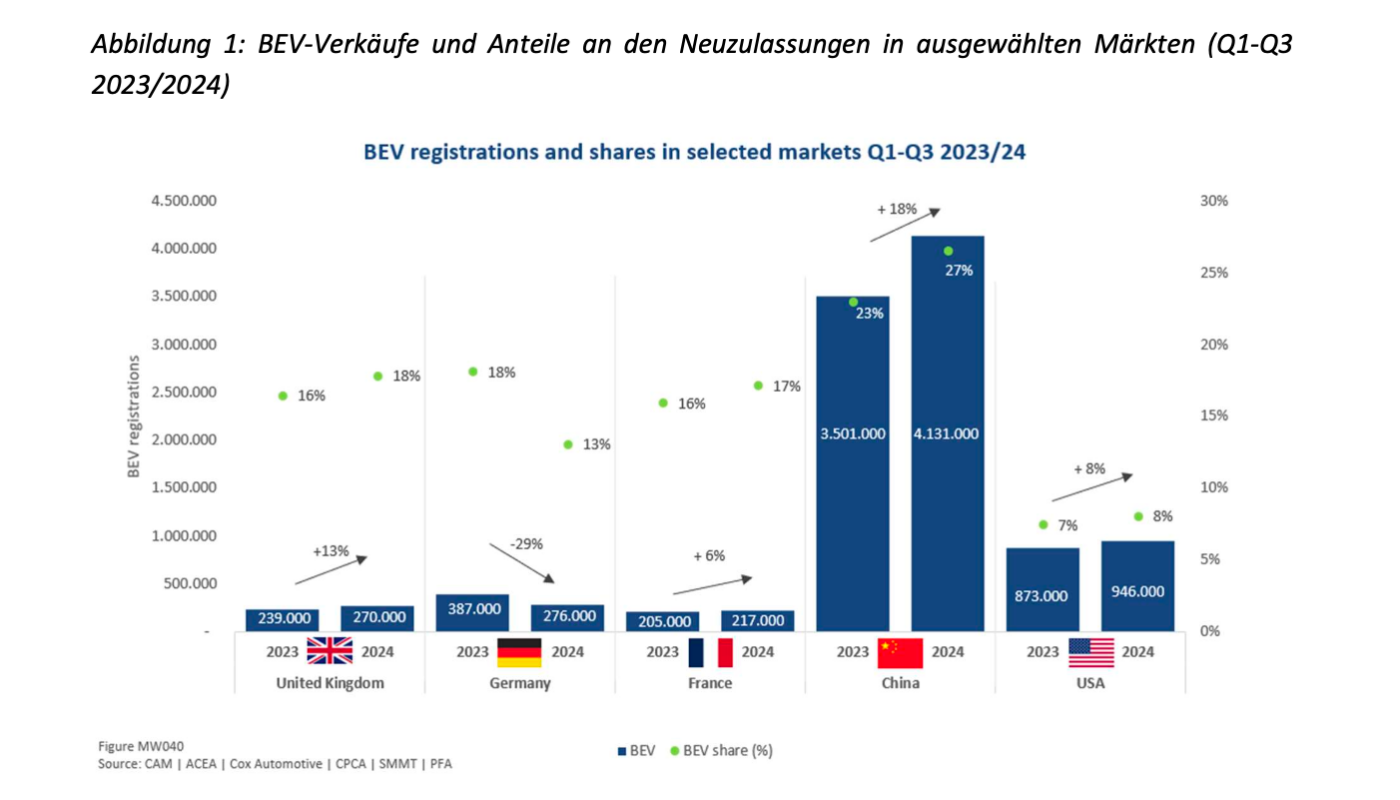
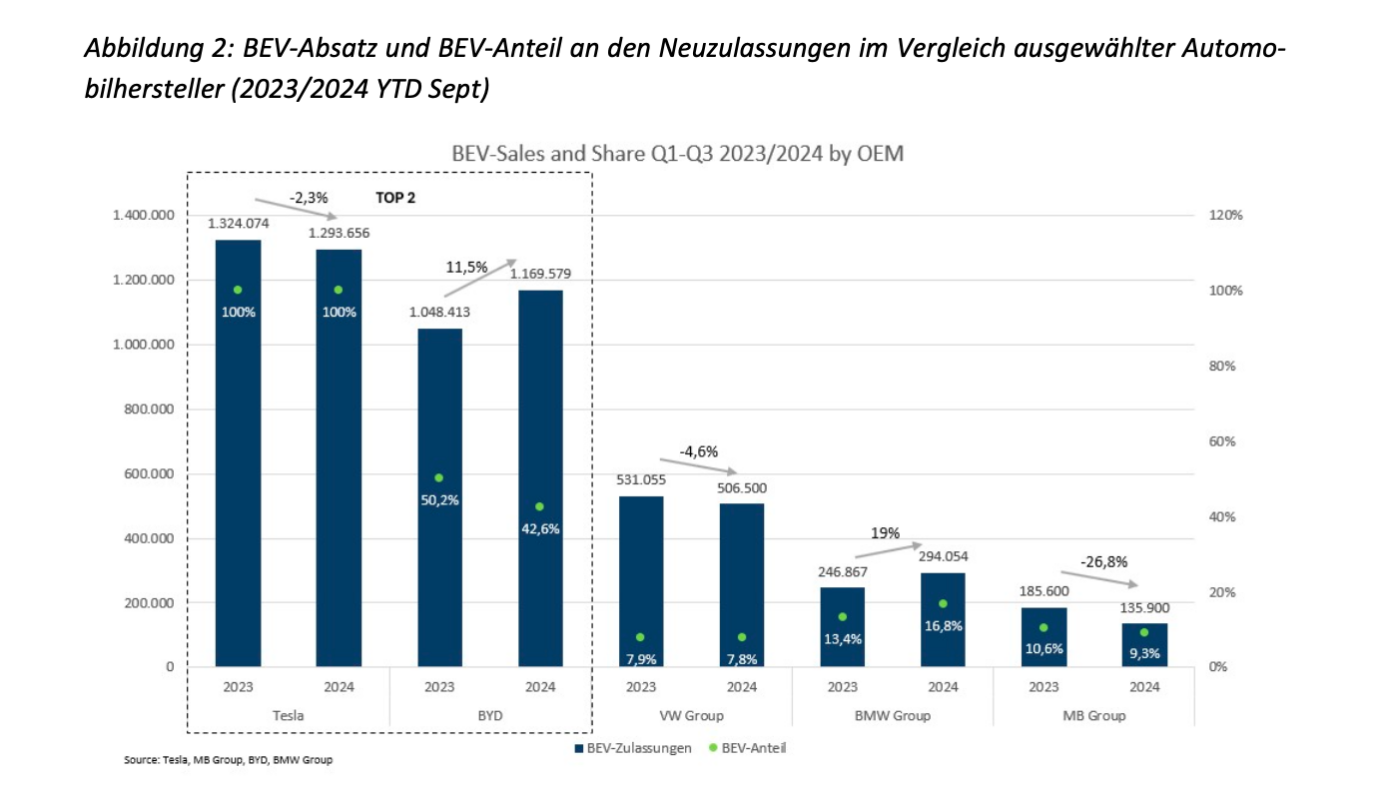
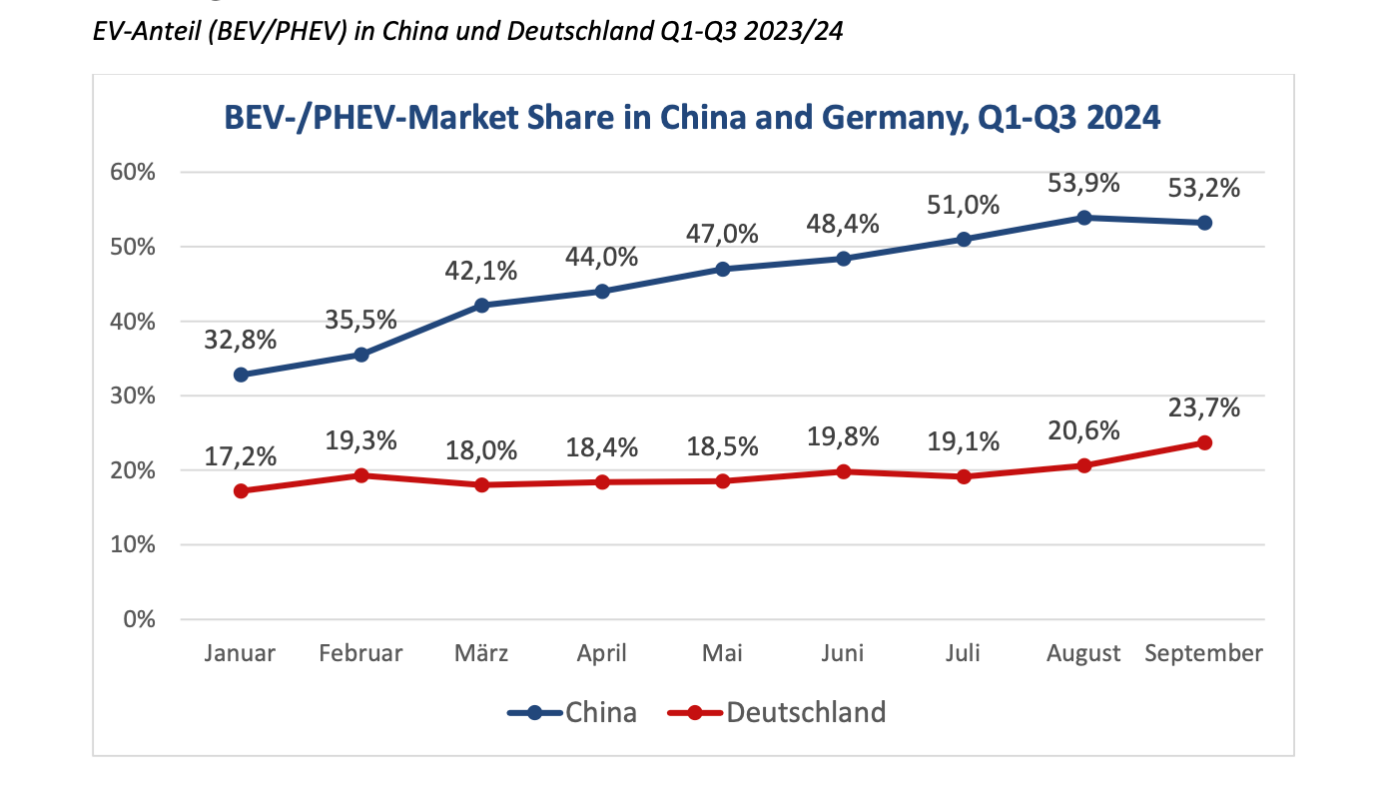
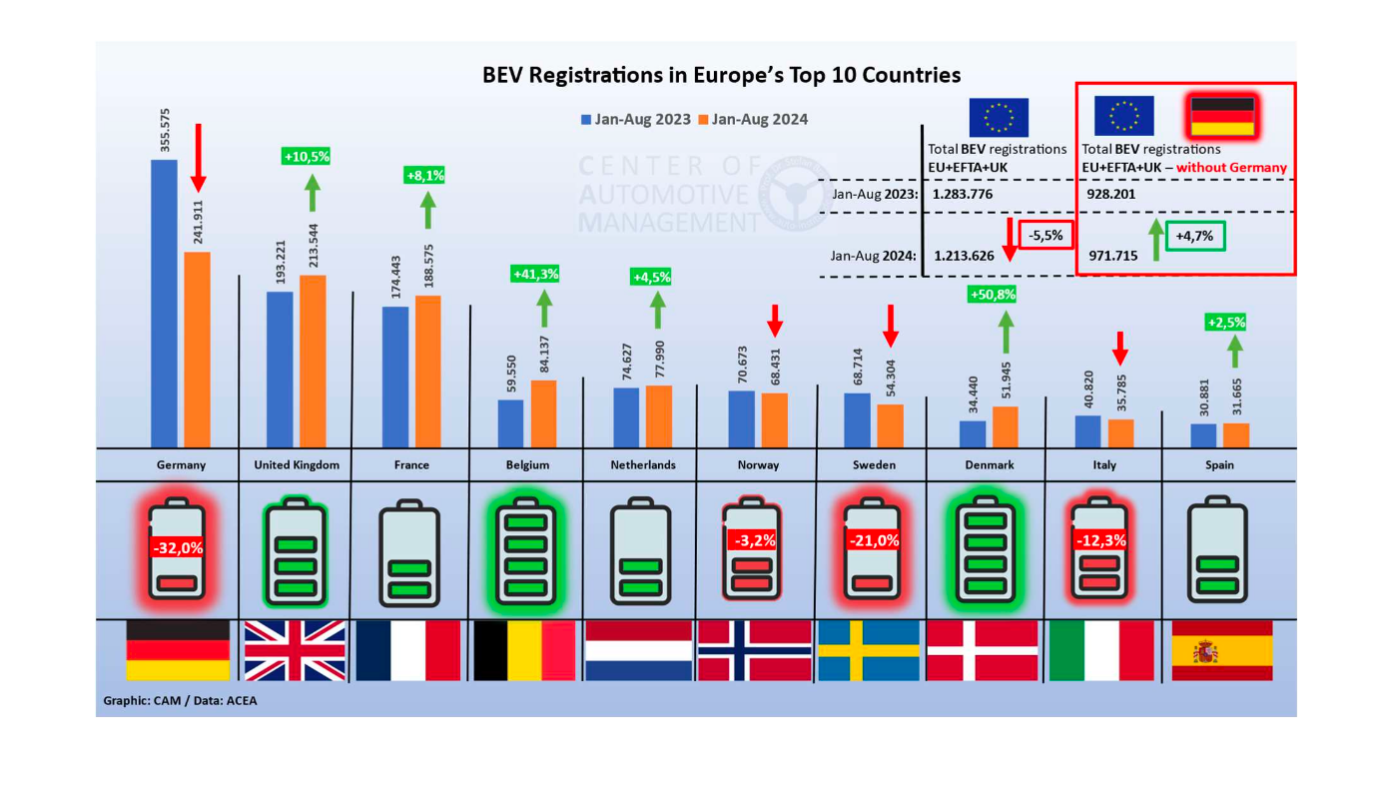
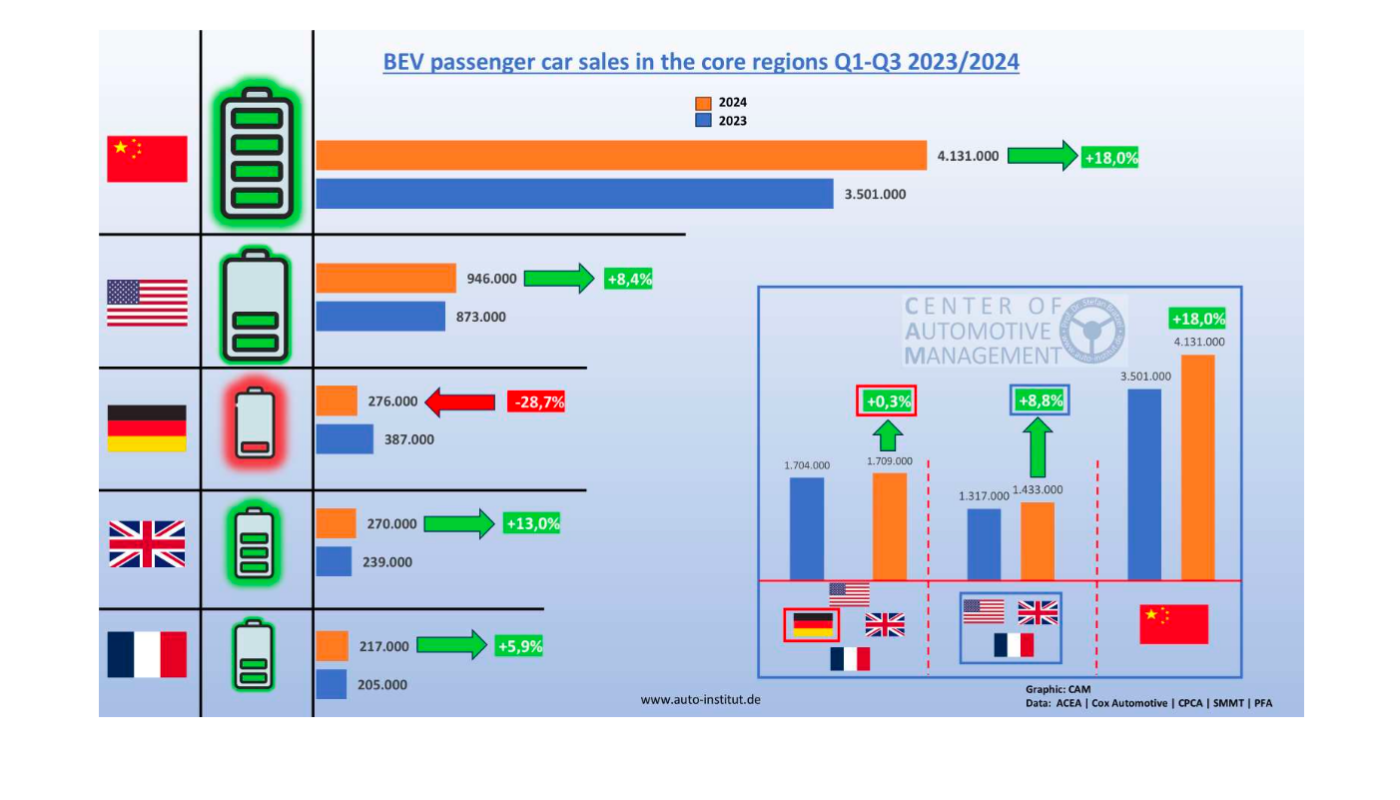
To illustrate the situation: in 2023, the UK had 239,000 BEVs after three quarters, while Germany had 387,000 EVs. Just one year later, the two nations are virtually on par. ‘’Electric mobility in Germany is in a critical transition phase and needs more political orchestration,‘’ says study director Stefan Bratzel. “The reintroduction of a time-limited purchase subsidy and better framework conditions for electricity charged and urban charging infrastructure would have an important revitalising effect.”
A brief look at the largest market in North America: There was a moderate increase in electric vehicle registrations in the US, albeit at a low level. New registrations increased by eight per cent and reached 946,000 units. The BEV share rose only slightly from 7.4 to 8.0 per cent.
There is significantly more momentum in EVs in the manufacturers’ rankings. Among other things, Tesla’s figures reflect the sluggish development of the US domestic market. Although the manufacturer remains the global leader with 1.29 million BEV sales after three quarters of 2024, it recorded a slight decline of 2.4 per cent. At the same time, the competition is closing in, with BYD increasing its sales by 11.5 per cent to 1.17 million units. With these trends, a change in leadership is imminent.
But the big problem is that the change in leadership has long since taken place when BEV and PHEV are added together. As is well known, Tesla only sells BEVs, while BYD also offers plug-in hybrids, which have experienced a boom in recent months. As a result, the BEV share of BYD sales has fallen from 50.2 to 42.6 per cent. ‘A key factor in this development is the sharp rise in new PHEV registrations: 2.2 million PHEVs were registered in the first three quarters of 2024, which corresponds to an increase of around 30 per cent compared to the 1.7 million new registrations in 2023,’ says the CAM.
The figures for German manufacturers mentioned in the CAM analysis were communicated by the companies last week: The VW Group sold 506,500 BEVs (-4.6%) after three quarters, BMW was able to increase its BEV sales by 19% to 294,054 units, while BEV sales at Mercedes started to decline. However, there is a discrepancy in the exact figures: Mercedes itself counted 148,500 BEVs after three quarters (-22 per cent), but the CAM shows 135,900 BEVs (-26.8 per cent).
The problem for German brands and BYD’s growth is a trend that is likely to continue, says Bratzel. “China is the leading market for electric mobility and increasingly also the leading supplier of electric vehicles,” says the professor at Bergisch-Gladbach University of Applied Sciences, Germany. “Many car manufacturers underestimated the dynamics of electric mobility in the world’s largest automotive market. The large number of attractive models from Chinese car manufacturers and the price war are putting pressure on German car manufacturers in particular.”
Source: Info by e-mail; in German

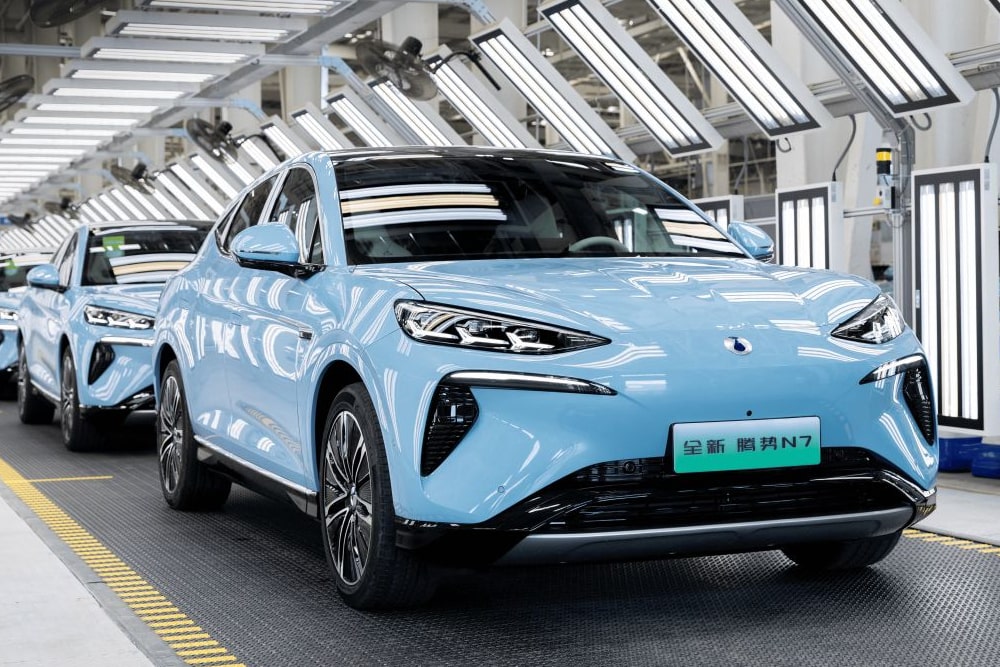



0 Comments